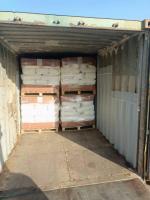what is the hydrolysis degree and molecular weight of nonionic polyacrylamide?
nonionic polyacrylamide (NPAM) is a type of water-soluble polymer that is widely used in various industrial applications due to its excellent performance and properties. NPAM is synthesized through the polymerization of acrylamide monomers in the presence of a nonionic surfactant or initiator. This process results in a long-chain polymer with a high molecular weight and a wide range of molecular weights. In this article, we will explore the applications of NPAM in various industries.what is the hydrolysis degree and molecular weight of nonionic polyacrylamide?
1. Water Treatment
The water treatment industry is one of the largest consumers of NPAM. NPAM is widely used as a flocculant, coagulant aid, and sedimentation aid in water treatment processes. In the water treatment process, NPAM is added to the water to help remove suspended solids, turbidity, and organic matter. NPAM molecules are positively charged and can neutralize the negative charge on the surface of suspended particles, making them stick together and form larger, denser particles that settle out of the water more quickly. This process is called flocculation, and it is critical in water treatment plants to ensure that the water is safe for consumption.
2. Papermaking
NPAM is widely used in the papermaking industry as a retention and drainage aid. In the papermaking process, NPAM is added to the pulp to improve the retention of fines, fillers, and fibers. This process helps to reduce the loss of valuable raw materials, increase the yield of paper, and improve the quality of the finished product. NPAM also helps to improve the drainage of water from the paper machine, which reduces energy consumption and improves the efficiency of the process.
3. Oil and Gas
NPAM is widely used in the oil and gas industry as a thickener, friction reducer, and fluid loss control agent. In the oil and gas drilling process, NPAM is added to the drilling mud to improve its viscosity, which helps to carry the cuttings to the surface. NPAM also reduces the friction between the drilling mud and the wellbore, which reduces the wear and tear on the drilling equipment. Additionally, NPAM is used as a fluid loss control agent to prevent the drilling mud from seeping into the formation.
4. Mining
NPAM is used in the mining industry as a flocculant and settling agent. In the mining process, NPAM is added to the ore slurry to help the particles stick together and settle out of the water more quickly. This process helps to improve the efficiency of the separation process and reduce the amount of water needed in the process. Additionally, NPAM is used in the tailings management process to help settle out the solid particles from the water, which reduces the environmental impact of mining operations.what is the hydrolysis degree and molecular weight of nonionic polyacrylamide?
5. Agriculture
NPAM is used in the agriculture industry as a soil conditioner, water retention agent, and erosion control agent. In agriculture, NPAM is added to the soil to improve its structure, increase water holding capacity, and reduce erosion. This process helps to improve the yield of crops and reduce the amount of water needed for irrigation. Additionally, NPAM is used in the reclamation of disturbed land to stabilize the soil and prevent erosion.
6. Food Industry
NPAM is used in the food industry as a thickener, stabilizer, and emulsifier. In the food industry, NPAM is used in products such as sauces, dressings, and desserts to improve their texture and stability. NPAM is also used in the production of meat products to improve the texture, moisture retention, and binding properties of the meat.what is the hydrolysis degree and molecular weight of nonionic polyacrylamide?
7. Textile Industry
NPAM is used in the textile industry as a sizing agent, coating agent, and finishing agent

